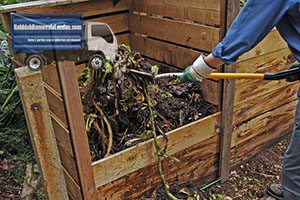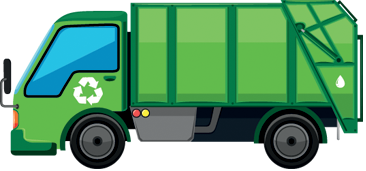Composting is one of the simplest yet effective ways to process organic household waste without actually engaging any specialised rubbish removal methods. Although composting seems to be a rather rudimentary waste to process organic waste, the method also helps reduce negative climate change through limiting greenhouse emissions.
Composting has a positive effect on climate change as it allows for more carbon to re-enter soil. Carbon rich soils are fertile and help water cycling in nature. More so, composting creates a natural organic fertiliser which helps reduce greenhouse emissions in arable soil. Organic fertilisers also make soil more workable through better water retention, and reduce soil’s tendency to emit nitrous oxide.
The most effective type of compost is made by creating a mix of nitrogen, carbon, oxygen and water. These are the essentials which make the environment for correct decomposition of organic matter. For best results however, it is important to carefully choose the type of organic matter used for making compost.
 As mentioned composting is an effective alternative to organic waste removal, and in order to create the best compost, use the following:
As mentioned composting is an effective alternative to organic waste removal, and in order to create the best compost, use the following:
Kitchen scraps – organic waste from the kitchen usually contains a variety of nutrients which help composting bacteria to thrive by generating sugar and heat. Suitable kitchen scraps include fruit and veggie peels, egg shells, coffee grounds etc. which all contain high levels of nitrogen.
There are two main composting methods – active and passive. Active composting also known as hot composting, relies on ideal conditions in order to make compost and works at over fifty five degrees Celsius. The passive method works at about thirty degrees centigrade but takes much longer to create compost. Both however will make good compost eventually which means saving time and effort off specialised rubbish removal.
Passive composting methods usually create a lot of greenhouse gases which emit foul odours. In order to reduce bad smells coming out of the compost bin, the mixture inside should be blended with garden waste like twigs, leaves, bark etc. which all help reduce gases and odours. Choosing which of the two composting methods to use (either passive or active) depends on people’s daily lifestyle and how much effort they wish to invest in composting altogether.
Effective composting also depends on the particular type of bin used in the process. In domestic conditions, composting is usually done in slate-sided or closed containers. In cases where available space is limited, it is recommended to use cylindrical bins. Usually, local waste removal authorities will be able to provide either of the two composting containers to residents who wish to do this at a very small cost or even for free. In order to speed up the composting process it is important to create good layering inside the bin, layering will improve air circulation through the compost mixture.
There is also composting on industrial level. Industrial scale composting is an effective waste removal and management alternative to conventional methods as it reduces the use of landfills and incinerators. Industrial composting systems use the active method.

